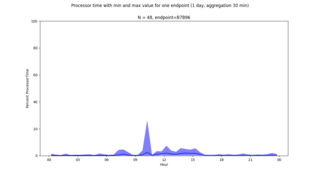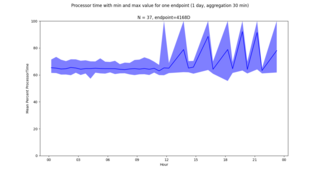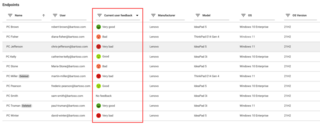- Tags:
- csrd,
- green it,
- sustainability

Going green: IT’s role in improving sustainability
The EU’s Corporate Sustainability Reporting Directive (CSRD) presents companies with new challenges – and IT pros with new opportunities to contribute to needed solutions.
In short
- The European Union’s Corporate Sustainability Reporting Directive (CSRD) sets new sustainability standards for companies and requires them to report on their effort to meet its requirements.
- Improving energy efficiency and extending hardware lifecycles can contribute toward sustainability goals.
- Analyzing system performance, technology requirements and user feedback can help inform energy-efficient IT purchases.
Sustainability is no longer just a buzzword as the digital world is also gearing up for a more environmentally friendly future. Companies and regulators alike are
implementing new practices and requirements to reduce the impact of today’s energy-hungry data centers and other IT systems.
For example, in the US, the Inflation Reduction Act sets a goal of achieving a net-zero grid by 2035 and is driving efforts to improve sustainability in government, business and consumer markets.
Technology analysts at Forrester also report that organizations worldwide must prioritize efforts to reduce direct emissions from energy consumption and indirect emissions
from supply chains. Forrester also states that IT leaders have a critical role to play in improving corporate sustainability through their decisions about data centers, cloud adoption,
infrastructure and endpoint devices and environmental monitoring software.
In the European Union, the new Corporate Sustainability Reporting Directive (CSRD) requires companies to report on their sustainability practices and their impact on the environment. That in turn points
to countless opportunities for IT to play an active role in making business and consumer markets more efficient and resource-friendly.
CSRD: A milestone for more transparency in sustainability
The CSRD is considered a milestone for increased transparency regarding environmental and social issues. It came into force on January 5, 2023, and requires implementation
by EU member nations by mid-2024.
On a practical level, CSRD-mandated reporting will involve a variety of new and existing sustainability measures. For example, while reporting on IT practices is not new,
the CSRD tightens requirements in the development of energy-efficient technologies, in extending of the service life of products and in reducing their operational impact.
Extended service life: IT focuses on energy-saving hardware
Let’s start with hardware as an example. More manufacturers are developing energy-efficient products that range from servers that produce less heat and
require less cooling, to laptops and smartphones that perform better with less energy.
There’s also a focus on extending the service life of products to reduce the amount of electronic waste. A multi-organization study in conducted in conjunction with the
United Nations found the world generated 53.6 million metric tons of
e-waste in 2019 from discarded mobile phones to laptops, monitors, devices, and IT hardware. Longer hardware lifecycles can also go a long way toward conserving resources and lowering
the environmental impact of supply chains.
What’s more, a recent study on “The market for IT services in Germany 2023” shows that companies see substantial decarbonization in IT when extending hardware lifecycles.

Analyze performance: Re-examine 3-5-year replacement cycles
The CSRD also demands new levels of responsibility from companies when buying IT products. Companies experienced with more sustainable approaches realize that many devices do not have to be replaced after 3 to 5 years as a matter of routine. Instead, they can replace just those that are underperforming and unstable. Longer hardware lifecycles are not only more sustainable but also easier on company budgets. I explained in a previous blog post how to use baramundi Argus Experience to identify underperforming devices.
Price or preference? Consider performance needs when purchasing
Processes can be optimized and made more sustainable by combining hardware with stable and efficient software. When purchasing hardware, the focus is often on price or brand preference. In most cases, there are only a few different models and usage patterns or needs are rarely considered. Companies usually can save money and reduce energy consumption by purchasing hardware and software with performance and power requirements that match their intended usage vs. simply buying energy-hungry higher-end systems with capabilities unlikely to be used.


With a solution such as Argus Experience, end devices with above-average or low CPU and/or memory loads can be identified. IT departments can use the data to select devices based on their prospective purposes, e.g., high-performance devices for software developers and simpler laptops for managers.
Sustainable and cost-efficient: Why employee feedback via work tools is crucial
Last but not least, user feedback can help save costs and promote sustainability. For example, you do not have to replace an older laptop that has reached the end of its 3 or 5-year service life if the user is satisfied and can work productively with it. Employee satisfaction can easily recorded and analyzed in baramundi Argus Experience.

Those who design hardware, software and employee requirements with sustainability in mind are also contributing to CSRD compliance. At the same time, considering
sustainability can generate greater follow-on benefits for companies, employees and the environment.
Take this to heart: your end users will thank you for it.
Optimize your IT performance to keep your employees productive!
Discover in our free white paper how you can improve the stability of your IT systems, avoid annoying IT problems and increase employee satisfaction. Proactive Digital Experience Management (DEX) promotes a seamless and efficient digital user experience from the ground up.
Download our free white paper "Satisfied end users as a success factor"
- Tags:
- csrd,
- green it,
- sustainability
Read more
The ingenious principle of Linux software management
- Tags:
- uem,
- bms,
- linux,
- managed software


